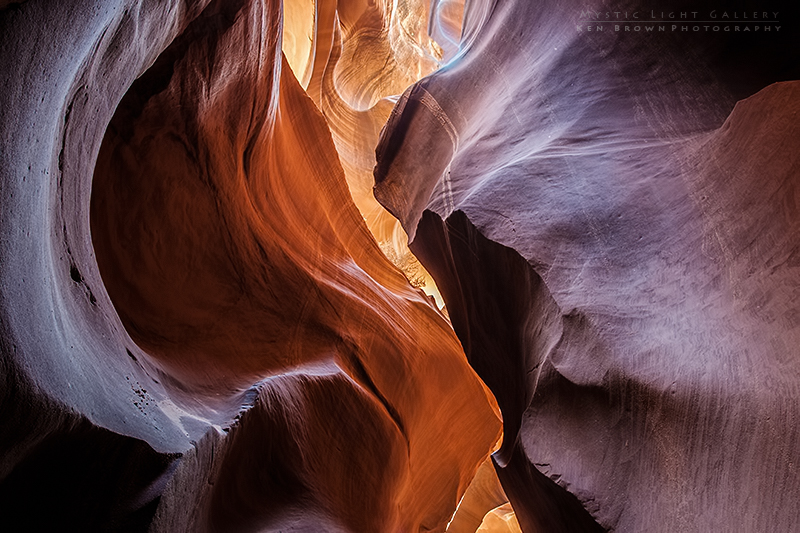
Get yourself set up with your favorite refreshment, sit back and get comfortable, because this is going to take a while! I am sure you will want to savor the nearly 60 gorgeous abstract images I am going to present to you. For those of you who have never hiked a slot canyon before, you are in for a real treat!
On the way into Page the day before, I had stopped at Lower Antelope Canyon to get some information from a local Navajo at the entrance station. I was told the best time of the day to photograph the slot was in the morning up till noon or so. So based on his recommendation, I was there at 8:30 AM, freshly showered, smelling good and anxious to begin this unbelievable photographers dream.
Antelope Canyon is the most-visited and most-photographed slot canyon in the American Southwest. Located on Navajo land, Antelope Canyon includes two separate slot canyons. They are referred to as Upper Antelope Canyon or The Crack, and Lower Antelope Canyon or The Corkscrew. The two canyons are run by two separate Navajo families, and entry cost and regulations are different between the two.
The Navajo name for Lower Antelope Canyon is Hazdistazí, which means “Spiral Rock Arches”. I chose Lower Antelope Canyon based on the lower entrance fee and the ability to obtain a “Photographers Pass”. The pass enables you to have up to 4 hours in the slot, and you are not required to be with the short guided tour. Free to roam and spend as much time as you like on composition and exposure. Speaking of exposures, mine ran up to 20 sec., requiring the use of my tripod for all shots taken. Very little direct sunlight reaches within the canyon. Therefore all light inside is reflected light, which creates the fantastic colors and hues seen.
Antelope Canyon was formed by erosion of Navajo Sandstone, primarily due to flash flooding. Rainwater, especially during monsoon season, runs into the basin above the slot canyons, picking up speed and sand as it rushes into the narrow passageways. Over the centuries the slots are eroded away, making the corridors deeper, smoother, and creating the flowing shapes we see in the rocks today.
The guided tours are required partly because of the flash flood danger. Rain doesn’t have to fall on or near the slots for flash floods to occur, as rain falling miles away from the canyons can funnel into them with little notice. In 1997, eleven tourists were killed in Lower Antelope Canyon by a flash flood.
As I awaited for the guide to show us to the entrance, I looked over the small group of people, looking for fellow photographers. It was quite apparent that there was only one other, and we gravitated to each other like magnets. She was Scottish, had a wonderful accent and was very easy on the eyes! We spent the first couple of hours sticking together, oohing, ahhing and photographing all the gorgeous colors of the rainbow, subtle tones and flowing shapes. It was even more beautiful than I had imagined it would be!
Adding to the aura were the guides as they passed through every hour or so. You would hear them off in the distance playing their Navajo flutes, the beautiful sounds echoing and swirling through the canyon. Then they would start singing in native tongue with rhythmic percussion’s. I stopped one of them and asked what the song was about. Beautiful lyrics about Mother Earth, our place and responsibility to Her and following The Path to be true to yourself.
After four hours, I left the beauty of this inner sanctuary, and was headed for the North Coyote Buttes area. Here I was hoping to spend up to four days hiking Buckskin Gulch (the longest slot canyon in the world, 13.5 miles), The Wave and surrounding area. I needed to stop at the Paria Outpost Ranger Station to obtain the necessary permit to hike to The Wave, but upon arrival found that it was still on the winter schedule and would not open for three more days. A sign said that permits could be obtained at the station in Kanab, an hour and a half drive away! So I decided to take the drive down the heavily wash-boarded House Rock Valley Road to have a little look-see for myself. I could always spend a couple of days backpacking Buckskin Gulch and go back out to the Paria Station to obtain the permit once it was open.
Upon arriving at the trailhead, I met a few young ladies who had made an attempt on Buckskin, but were forced to turn around early on due to the slot being full of deep cold water. They said that they had met up with a ranger who told them that he did not recommend it and had tried it under similar conditions and came near to hypothermia.
So…Buckskin is out, The Wave is out…hmm…I guess I’ll go over to the Coral Pink Sand Dunes for the night, and then backtrack into Kanab to try to get The Wave permit in the morning.
By the time I arrived at Coral Pink Sand Dunes it was already late afternoon, and needed to secure a campsite. So I spent an hour or so photographing around some dunes nearby the road, then went to the BLM campground to pick a site. With the sun beginning to sink low in the sky, I dumped some gear in the site to show occupancy and quickly headed back to the dunes.
I hiked about a mile and a half over the dunes and found a location to set up for the sunset. Composing the old charred remains of a tree protruding from the sand in the foreground. After the sun had set and darkness rapidly set in, I realized that I was left with only my prescription sunglasses and no headlamp to make my way back to the car. After about 45 minutes of stumbling around the dunes in the dark with no glasses, I finally reached the road and was soon back at the car.
Back at camp I set up the tent by the light of a lantern while I cooked my dinner of Ramen and canned chicken. Then after eating I kicked backed in my camp chair and wrote the daily notes in my journal. Then fell asleep to the sound of howliing and yipping coyotes and frogs (odd!). I must say…you have got to check out the stars out here!…

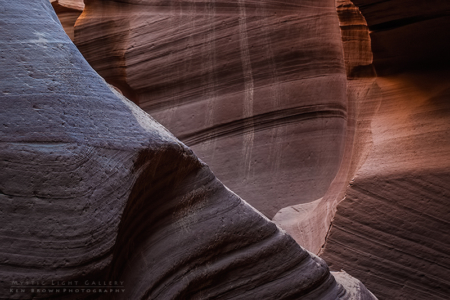
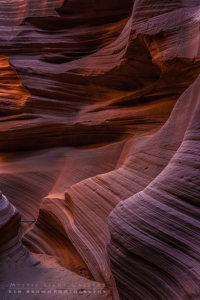
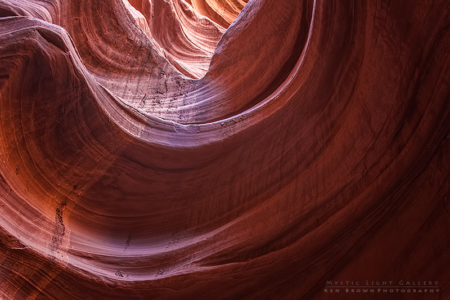
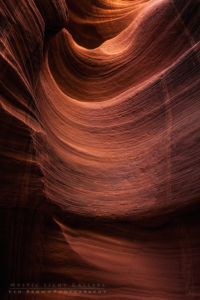
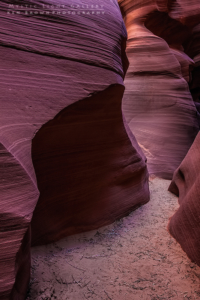
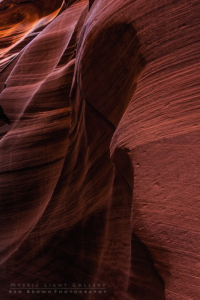
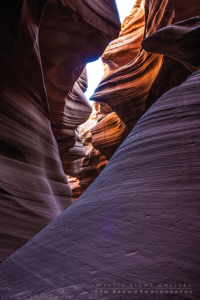
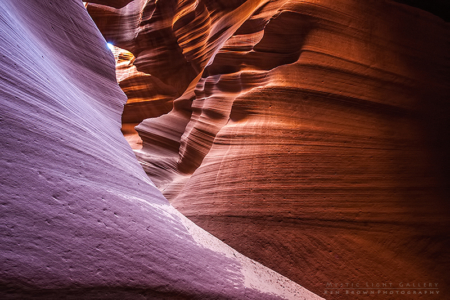
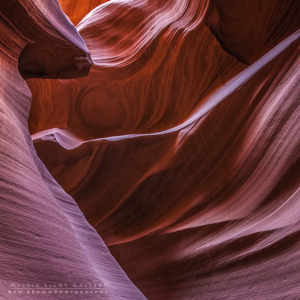
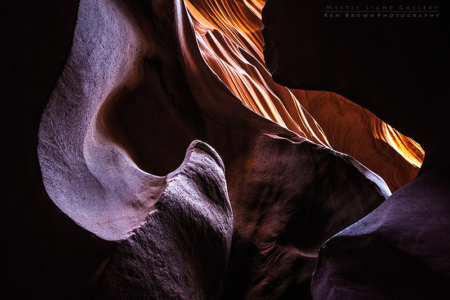
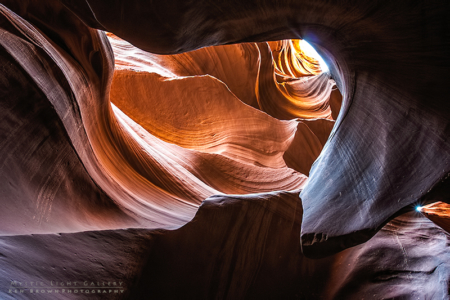
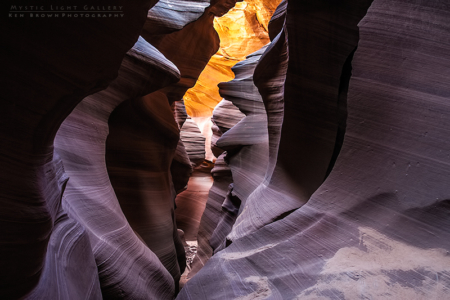
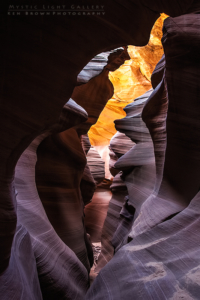
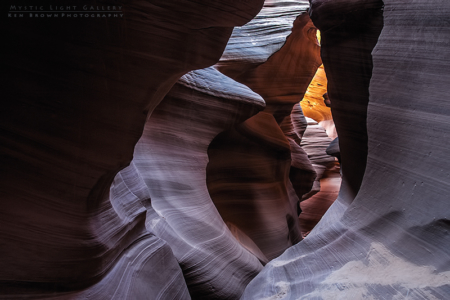
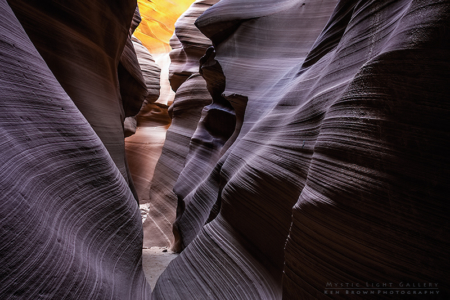
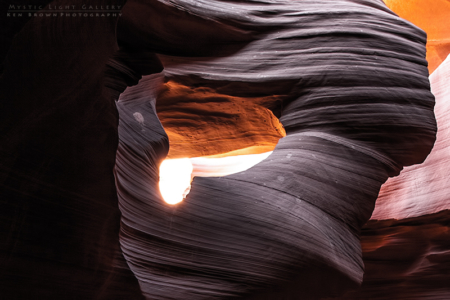
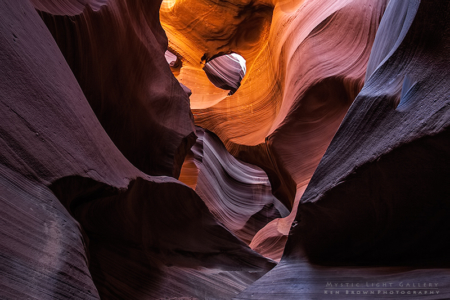
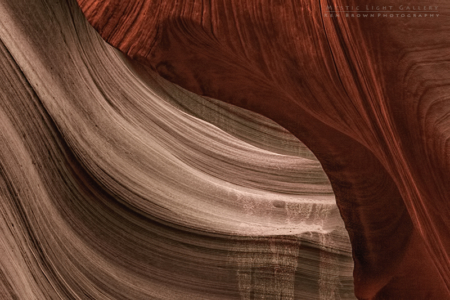
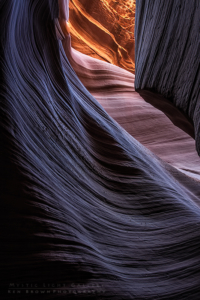
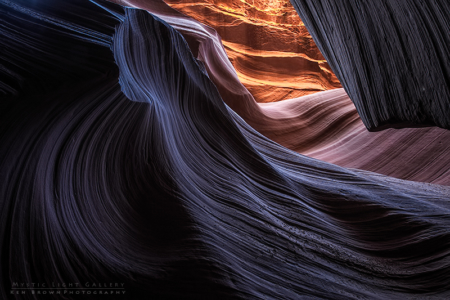
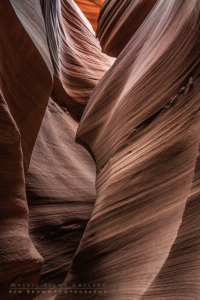
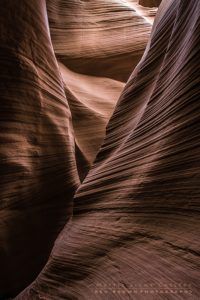
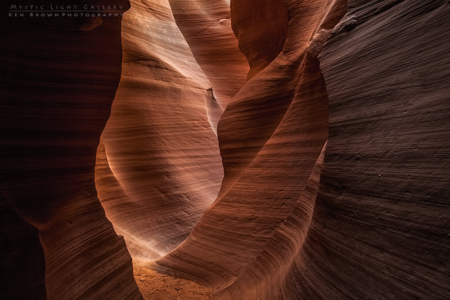
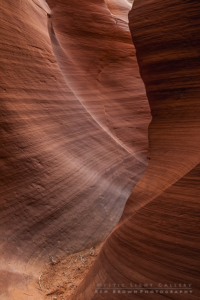
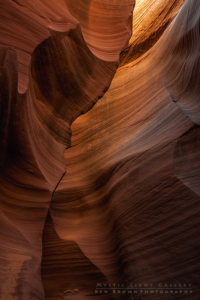
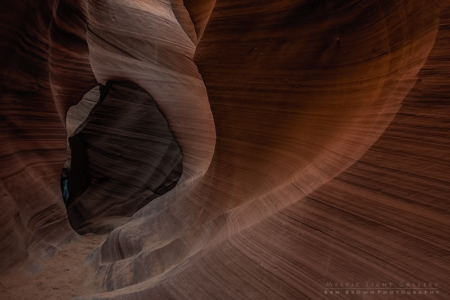
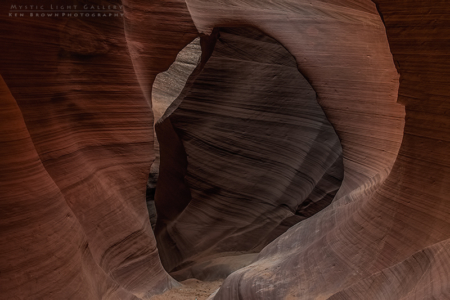
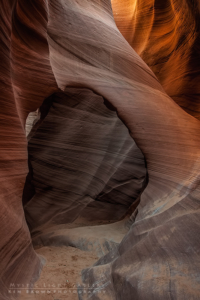
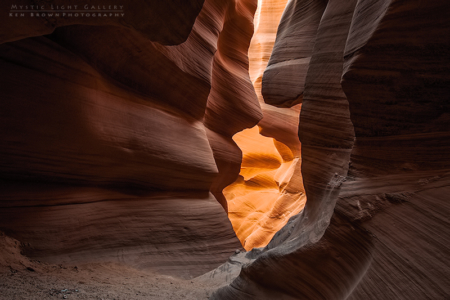
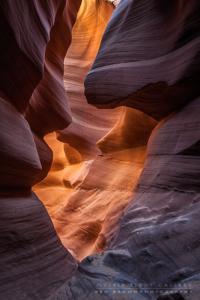
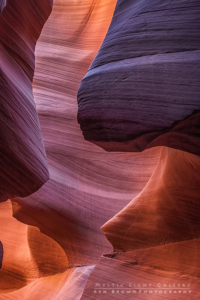
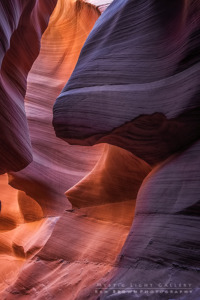
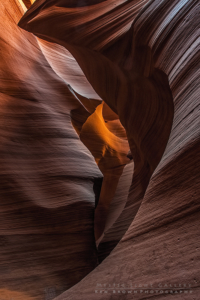
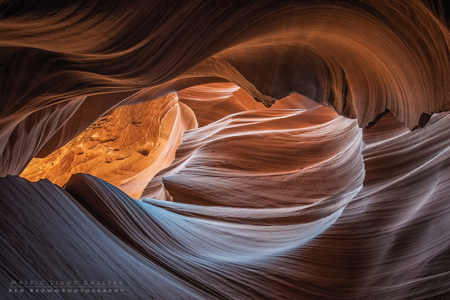
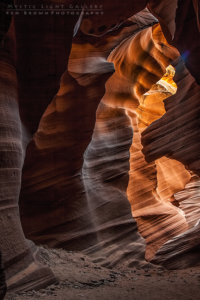
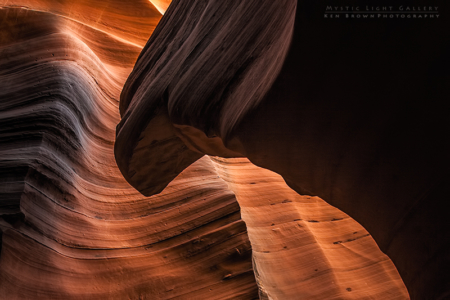
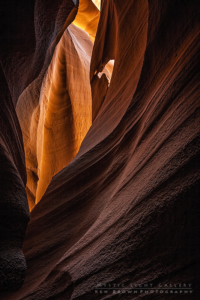
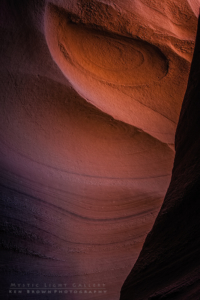
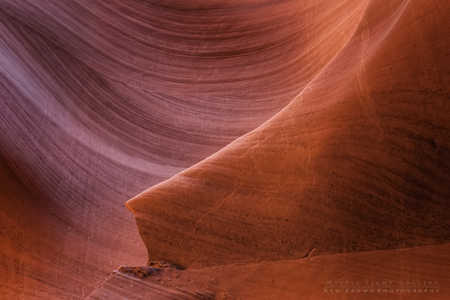
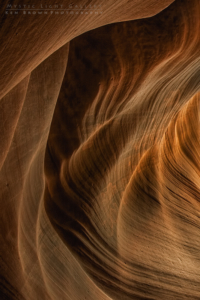
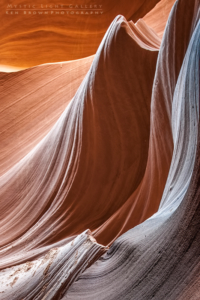
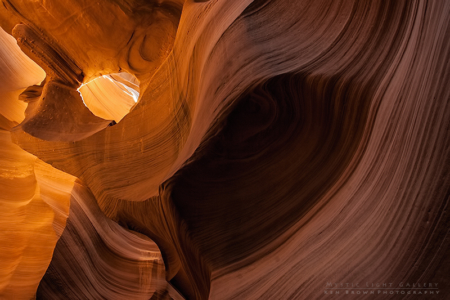
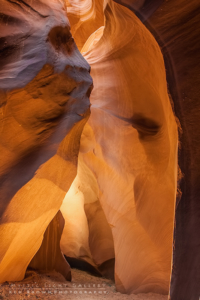
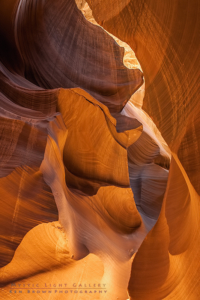
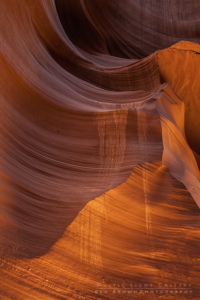
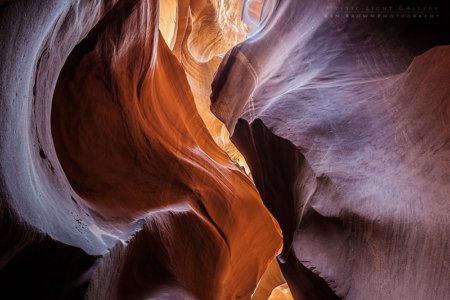
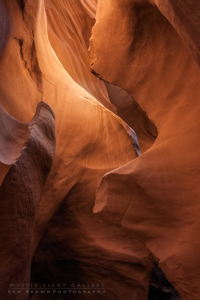
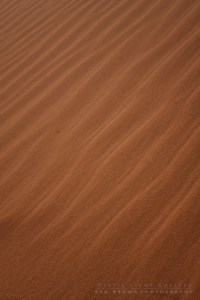
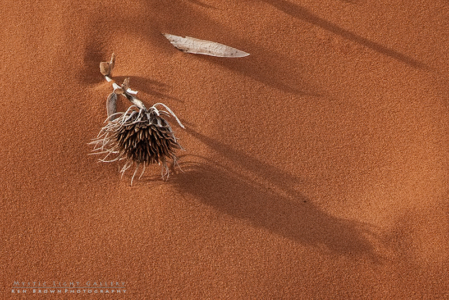
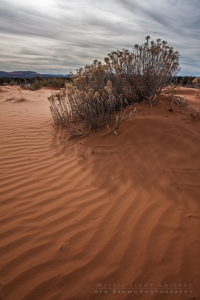
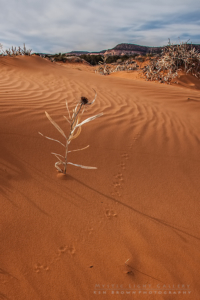
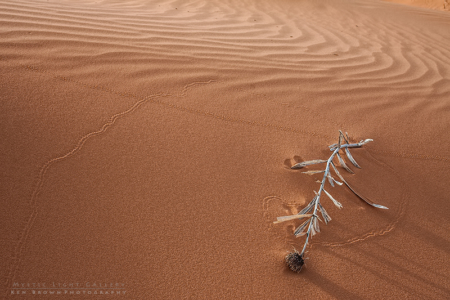
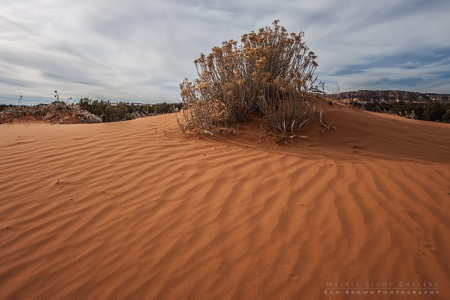
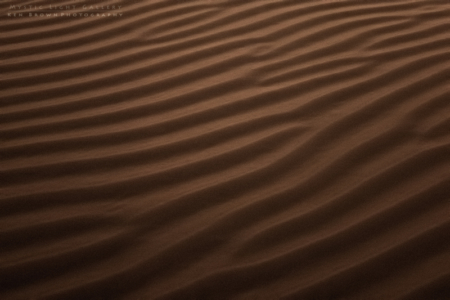
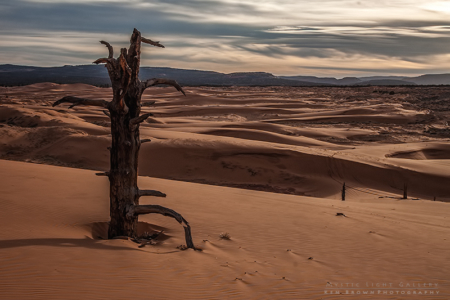
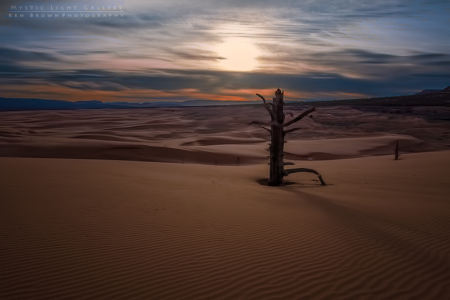
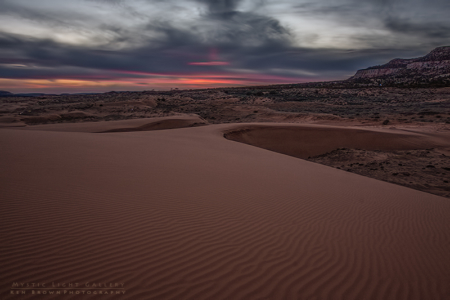
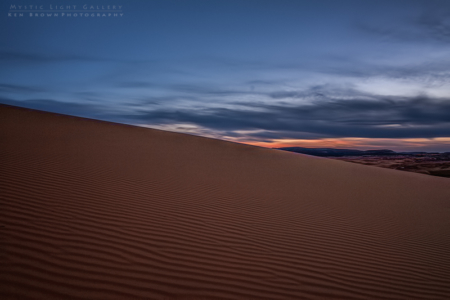
Absolutely amazing. They look like gorgeous paintings. Where can I get some prints????
Thank you Peggy! It was truly a magical day from beginning to end! I still have a lot of work to do to get through all the photos from this trip, but I hope to launch my eStore at that time.
Mother Nature’s work and how you capture it can only be described in one word Amazaing! Simply breath taking!
Wow! Fantastic abstract art. Some look like draped fine silk fabric in purples and oranges.
Thank you guys! My time in the canyon and photographing these was a very memorable experience for me!